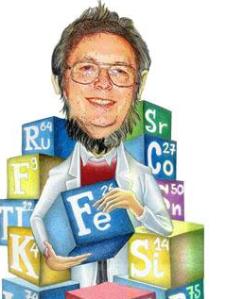4,349 Answered Questions for the topic Science
04/13/21
HELP! I need help solving these chemistry questions before midnight! Please and thank you!
a.A sealed container of an unknown gas has a volume of 2.5 L and a pressure of 5 atm at 25oC.How much gas is in the container?b.If the mass of the gas in the container is 40.5 g, what is the...
more
04/13/21
I need help before midnight! Please and thank you!
What mass of chlorine gas is contained in a 10.0 L container at 27°C and 3.50 atm of pressure?
I need help with maths. How do i insert that image? Its trigonometry.
Help. I need help with maths. How do i insert that image? Its trigonometry.
I need help with maths. How do i insert that image? Its trigonometry.
Help. I need help with maths. How do i insert that image? Its trigonometry.
I need help with maths. How do i insert that image? Its trigonometry.
Help. I need help with maths. How do i insert that image? Its trigonometry.
I need help with maths. How do i insert that image? Its trigonometry.
Help. I need help with maths. How do i insert that image? Its trigonometry.
04/12/21
NEED HELP! CAN YOU EXPLAIN TO ME WHAT I AM SUPPOSE TO DO OR HOW TO SOLVE THIS QUESTION.
Kendra is making her homemade muffin recipe. She uses a certain amount of flour to produce the number of muffins shown in the table. Which ratio is equivalent to the number of cups of flour to the...
more
combining functions
f(x)=x3−4 and g(x)=x3 Step 1 of 2: Find the formula for (f∘g)(x) and simplify your answer. Then find the domain for (f∘g)(x)(f*g)(x)=???Domain=???
04/12/21
quantum numbers
a.) List all of the possible values for l in the 2nd energy level (n = 2). Leave fields blank if they are not needed.
04/12/21
HELP ---> 3 Cu + 8HNO3 --> 3 Cu(NO3)2 + 2 NO + 4 H2O
3 Cu + 8HNO3 --> 3 Cu(NO3)2 + 2 NO + 4 H2OIn the above equation how many moles of water can be made when 144.1 grams of HNO3 are consumed?Round your answer to the nearest tenth. If you...
more
04/11/21
If you measure the size of each plate to be 12 cm2, how far apart are the plates, in micrometers?
A 0.054 μF capacitor is being held at a potential difference of 431 μV. I keep getting an answer 1.967 * 1o^-7 which is wrong. Please explain and show your work. Thanks!
combining functions
Find (f∘g)(2) for the following functions. f(−9)=−13 and g(2)=−9(f*g)(2)=???
combining functions
f(x)=4x and g(x)=cube of √x Step 2 of 2 : Find the formula for (f/g)(x) and simplify your answer. Then find the domain for (f/g)(x).(f/g)(x)=???Domain=???
04/10/21
physics question
You load a 7.6g AAA battery into your new mini penlight flashlight. The spring at the bottom of the battery compartment has a k=89 and you compress it 2.0 cm as you screw on the cap. At camp you...
more
04/10/21
physics question
Tommy gives Sally (mass 55.0kg) sitting on a swing an underdog and lifts her 1.25m higher than she was when sitting stationary at the bottom of the swing. a. What should Sally’s velocity be when...
more
04/10/21
physics question
A 25 g pellet is placed in the barrel of a toy gun and is propelled by a spring with a spring constant of 50. N/m. The gun is held vertically, the spring is compressed 20. cm and then released...
more
combining functions
f(x)=x2−4 and g(x)=4x Step 1 of 2 : Find the formula for (f+g)(x) and simplify your answer. Then find the domain for (f+g)(x). (f+g)(x)=???Domain=???
Calculate wavelength
Calculate the wavelength of:
a.)
an electron (9.10×10-31 kg) moving at a speed of 5.81×106 m/s (13000000 miles per hour).
b.)
a baseball (0.140 kg) moving at a speed of 40.2 m/s...
more
Combining functions
f={(−4,−1),(1,−1),(−1,−3)}andg={(0,2),(1,−1),(−4,2)}Step 1 of 4 : Find (f+g)(1).=???
04/08/21
How can we prevent the earth's average temperature from rising by more than 2 ° C to 2100?
someone explain in detail?
04/08/21
Why do these manifestations occur in end-stage renal failure?
Explain why each of the following manifestations occurs in end-stage renal failure:
Metabolic acidosis
Hyperkalemia
Hypocalcemia
Increased BUN and serum creatinine
Anemia
Impaired...
more
04/08/21
Predict the sign of ΔS for the following reactions. Then predict whether the reaction is spontaneous, non-spontaneous, or dependent on the magnitude of ΔH, ΔS and temperature.
a.) Na2CO3 (s) Na2O (s) + CO2 (g) (endothermic) b.) 2NF3 (l) N2 (g) + 3F2(g) (exothermic) c.) 2XeO3 (s) 2Xe (g) + 3O2(g) (exothermic)
Still looking for help? Get the right answer, fast.
Ask a question for free
Get a free answer to a quick problem.
Most questions answered within 4 hours.
OR
Find an Online Tutor Now
Choose an expert and meet online. No packages or subscriptions, pay only for the time you need.



















